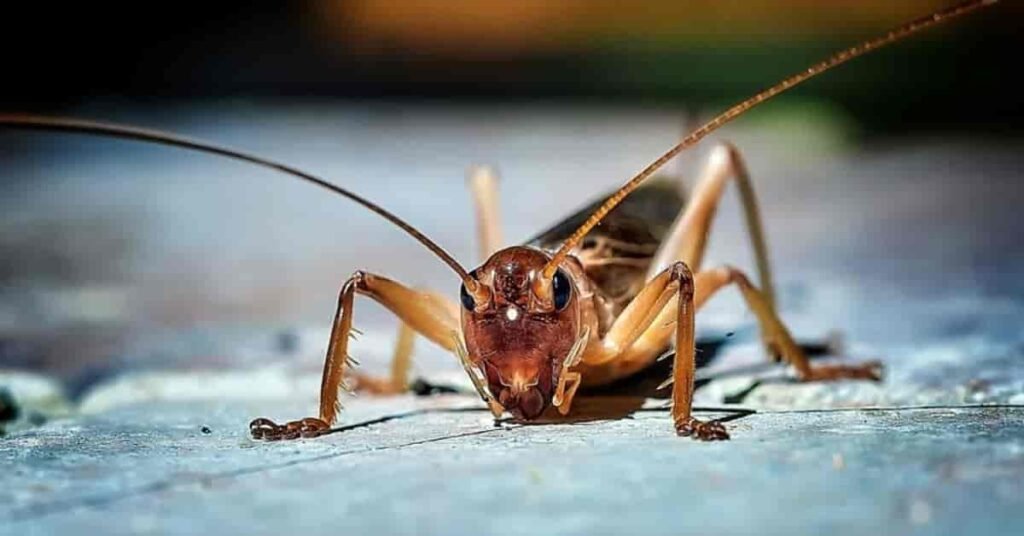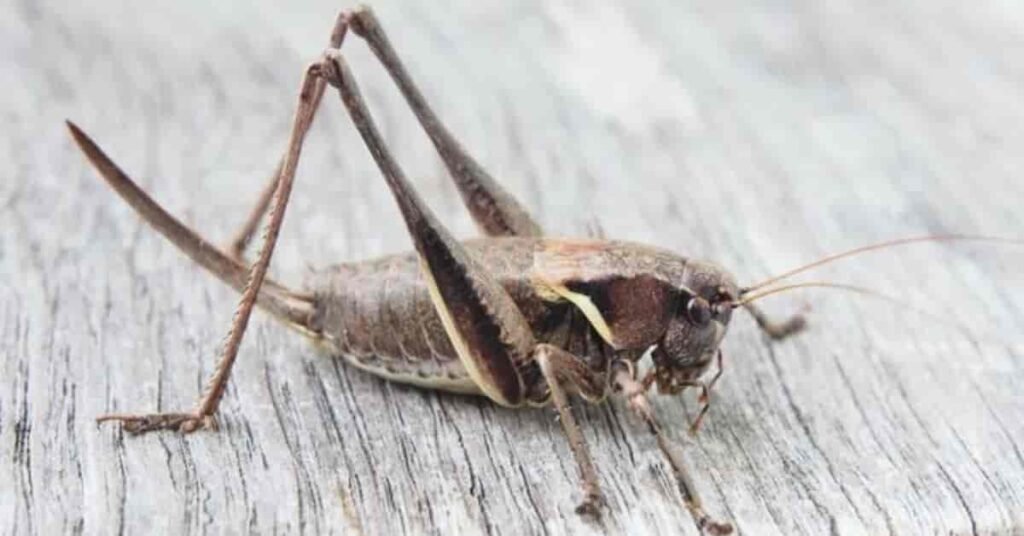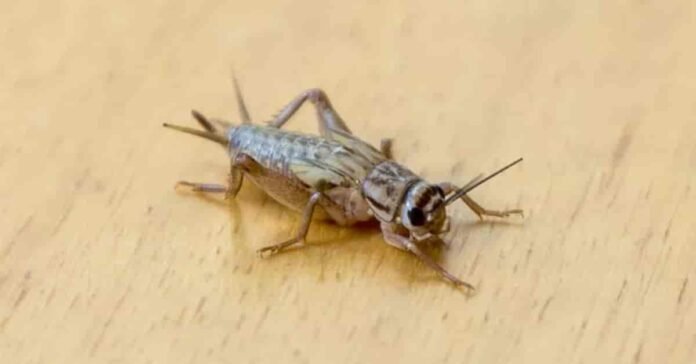We love crickets and know they need a good diet. This guide will cover what do crickets eat and how to feed them well. We’ll talk about their diet in the wild and in captivity. This way, we can keep them healthy and happy.
We’ll look at how crickets eat naturally and what they need to stay healthy. This guide is for both new and experienced cricket keepers. It will help you give your crickets the best care.
Key Takeaways
- Crickets are omnivorous and have diverse dietary preferences in the wild, including plant matter, organic debris, and even small invertebrates.
- Proper nutrition is crucial for maintaining the health and longevity of captive crickets, including a balance of protein, carbohydrates, and essential vitamins and minerals.
- Feeding patterns and timing play a significant role in cricket care, with specific guidelines for various cricket species and their unique dietary needs.
- Understanding the dietary requirements of different cricket species, such as cave crickets, mole crickets, and house crickets, is essential for providing appropriate care.
- A well-balanced and varied diet is the key to supporting the overall well-being and thriving of your cricket companions.

What Do Crickets Eat Fungi: A Look into Their Wild Feeding Habits
Crickets are fascinating creatures. Knowing what do crickets eat fungi is key to their care and well-being. In the wild, they eat plants, insects, and fungi like mushrooms.
Wild Cricket Dietary Preferences
In their natural habitat, crickets mostly eat plants like leaves and fruits. They also eat other insects, their eggs, fungi, and decaying matter. This varied diet helps them get the nutrients they need to stay healthy.
Nutritional Requirements for Healthy Crickets
Crickets need a balanced diet to stay healthy and grow. Their diet should include proteins, carbs, fats, vitamins, and minerals. The right nutrients are crucial for their development and longevity.
Feeding Patterns and Timing
Crickets are most active at night and early morning. They eat small amounts of food all day and night. Knowing their feeding patterns helps us feed them right and let them behave naturally.
Understanding cricket diet and feeding habits helps us care for them better. We can provide the best environment for their well-being.

What Do Crickets Eat Mushrooms: How Mushrooms Fit into a Cricket’s Diet
Crickets, including species like house crickets and cave crickets, are opportunistic feeders and will often consume mushrooms when available. What do crickets eat mushrooms? Mushrooms provide essential nutrients, including moisture and proteins, which are beneficial for crickets. In the wild, crickets may feed on decaying mushrooms in damp environments, as they thrive on organic matter. However, not all mushrooms are safe for crickets, as some varieties can be toxic. It’s important to ensure that any mushrooms offered to crickets are non-toxic and safe for consumption. If you’re keeping crickets as pets, it’s best to provide them with a balanced diet that includes mushrooms in moderation.
What Do Crickets Eat: Common Foods and Feeding Guidelines
Caring for crickets means knowing what they eat. They are omnivorous, eating both plants and proteins. Let’s look at what crickets like to eat and how to feed them right.
Commercial cricket feed is a top choice. It’s made to give crickets all the nutrients they need. But, crickets also like a mix of foods from your home.
Fruits and vegetables: Crickets love apples, carrots, sweet potatoes, and greens like kale and spinach.
Grains and cereals: Oats, whole-wheat bread, and unsweetened cereals are great for them.
Protein sources: Cooked egg, lean meat, and fish are good for their growth.
Feeding crickets right is key. Give them a little food every few days to avoid overfeeding. Make sure they always have clean water to drink.
| Cricket Food | Nutritional Benefits | Feeding Guidelines |
| Commercial Cricket Feed | Balanced nutrition, essential vitamins and minerals | Provide a small amount every few days |
| Fruits and Vegetables | Hydration, fiber, and various micronutrients | Offer a variety, chop or slice for easy access |
| Grains and Cereals | Complex carbohydrates and energy-boosting nutrients | Choose unsweetened options, provide in moderation |
| Protein Sources | Support growth, development, and muscle function | Offer cooked, lean options in small portions |
Knowing what crickets eat and how to feed them is crucial. This way, your cricket colony will be healthy and happy. Try new foods slowly and see what they like best.
What Do Mole Crickets Eat and Their Diet Preferences
Crickets, including species like house crickets and cave crickets, are opportunistic feeders and will often consume mushrooms when available. Mushrooms provide essential nutrients, including moisture and proteins, which are beneficial for crickets. In the wild, crickets may feed on decaying mushrooms in damp environments, as they thrive on organic matter. However, not all mushrooms are safe for crickets, as some varieties can be toxic. It’s important to ensure that any mushrooms offered to crickets are non-toxic and safe for consumption. If you’re keeping crickets as pets, it’s best to provide them with a balanced diet that includes what do mole crickets eat in moderation.
What Do Cave Crickets Eat: Understanding the Diets of Cave, Mole, and House Crickets
Exploring the world of crickets, we find that each species has its own food needs. This is due to their different habitats and lifestyles. We’ll look at what do cave crickets eat, mole crickets, and house crickets like to eat. This will help you care for the crickets you have.
Cave Cricket Diet Specifics
Cave crickets live in dark, damp places like caves and basements. They eat decaying matter, fungi, and tiny organisms. These crickets use their sense of touch and smell to find food in the dark.
Mole Cricket Feeding Habits
Mole crickets are great at digging and eat plant roots and seedlings. They target young grasses, veggies, and plants. They also eat small insects and soil creatures while digging.
House Cricket Nutrition Requirements
House crickets, popular pets, eat a variety of foods. They enjoy fruits, veggies, and grains. Knowing what they need helps keep them healthy and happy.
FAQ
What do crickets eat in the wild?
In the wild, crickets eat a mix of plants and animals. They munch on leaves, stems, and seeds. They also eat insects, fungi, and rotting matter.
What are the nutritional requirements for healthy crickets?
Healthy crickets need a diet full of proteins, carbs, fats, vitamins, and minerals. They must have lots of calcium and protein to grow well.
How often should I feed my captive crickets?
Feed captive crickets daily or every other day. Give them food based on how many there are and how much they eat.
What are some common foods that can be fed to crickets?
You can feed crickets many foods. This includes special cricket food, fresh fruits and veggies, grains, and even cooked rice or pasta.
Do different cricket species have unique dietary needs?
Yes, different crickets need different foods. For example, cave crickets need more moisture and protein. Mole crickets prefer soil nutrients.
What do mole crickets eat?
Mole crickets mainly eat plant roots, stems, and leaves. They also eat some soil matter and small insects.
What do cave crickets eat?
Cave crickets eat fungi, rotting plants, and small insects. They live in dark, damp places.

